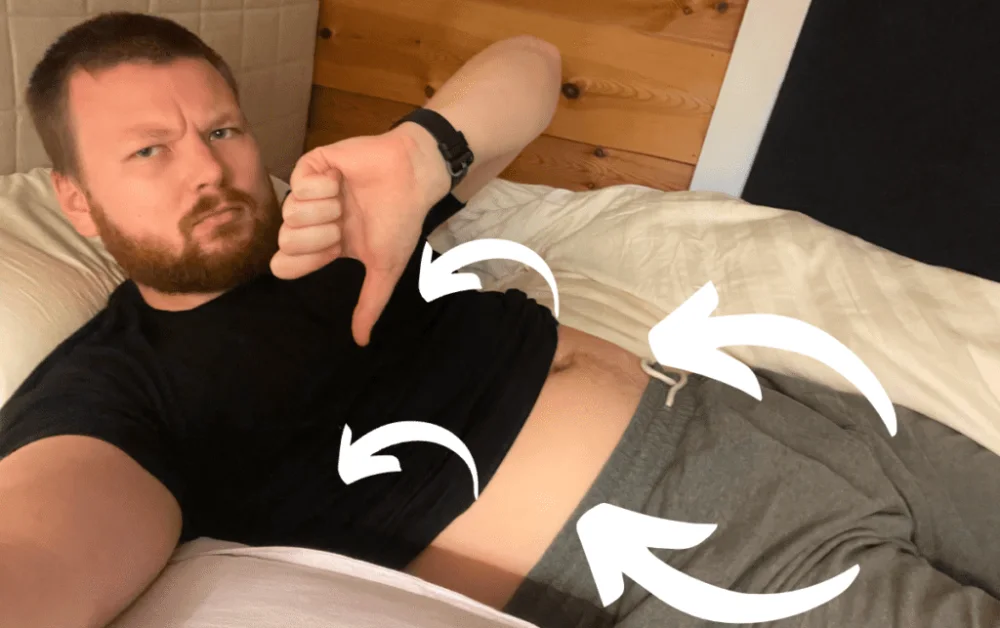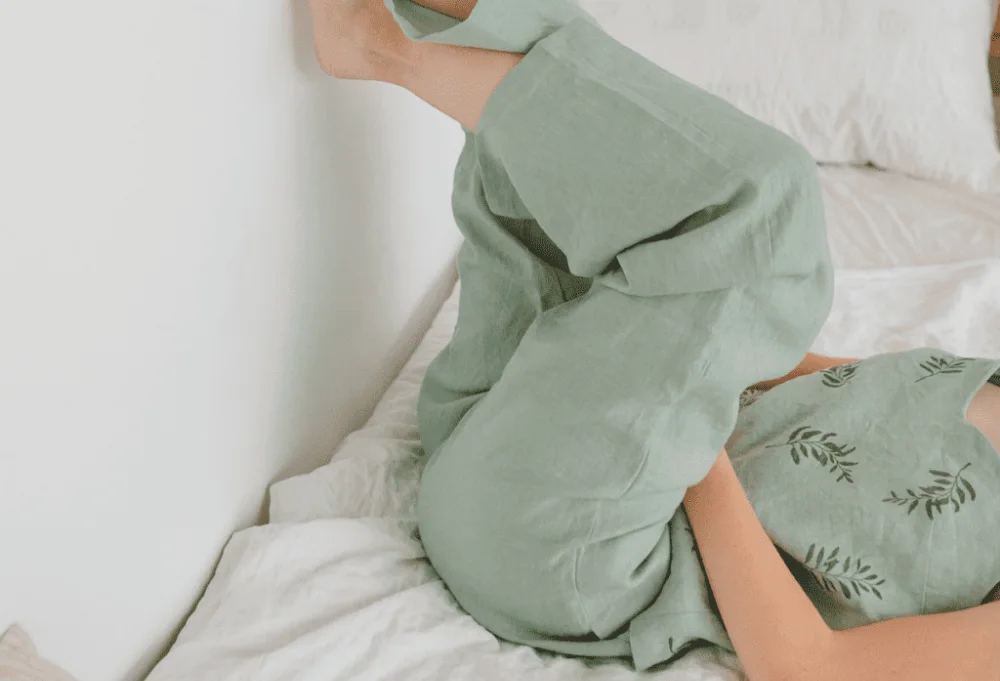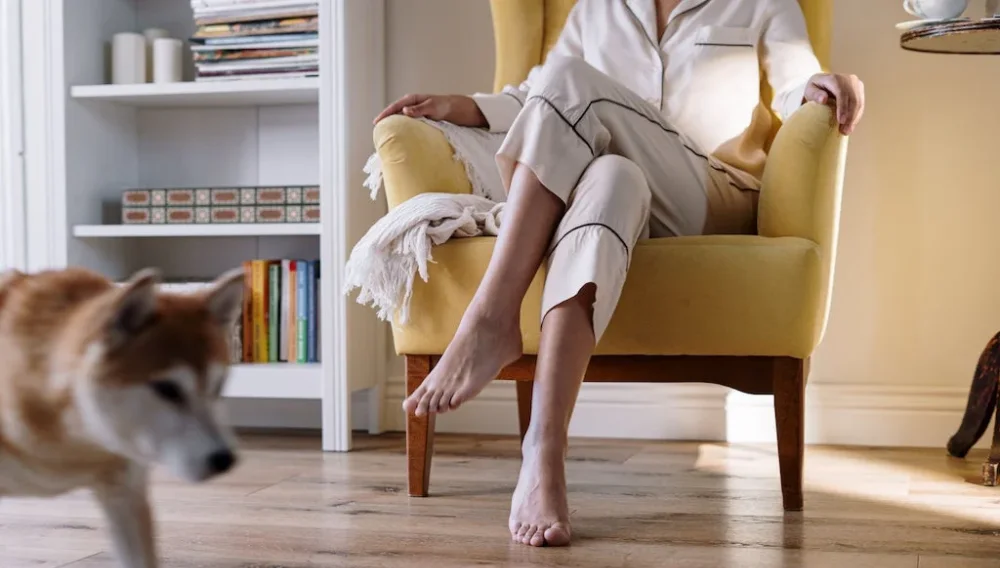We’ve all been there—waking up in the middle of the night, adjusting our pajamas as they’ve shifted up around our legs or waist. It’s frustrating, uncomfortable, and can even mess with the quality of your sleep. Pajamas are meant to make us feel cozy, not fidgety, so when they ride up during sleep, it’s a real mood killer. The problem often lies in the fit, fabric, or even body shape, but don’t worry, there are solutions!
In this guide, we’ll walk you through several methods to keep your pajamas from riding up. From choosing the right materials to simple tricks you can do while dressing, you’ll be equipped with practical tips to finally enjoy a peaceful, uninterrupted sleep in your favorite pajamas. Let’s dive into it!
What is Pajama Riding Up?

Pajama riding up happens when your sleepwear shifts out of place, often creeping up your legs or rolling up under your back. It’s that uncomfortable feeling when your pants, shorts, or even your pajama top don’t stay where they’re supposed to while you’re sleeping or lounging around. This can totally disrupt your rest, especially if you wake up in the middle of the night trying to untangle yourself.
It’s not just limited to pajamas! Any comfy clothing you wear at home—whether it’s shorts, nighties, or sweatpants—can ride up. Even when you’re chilling on the couch, you might feel your sleepwear shifting and bunching up in places you don’t want. It’s annoying, and it makes those cozy moments less enjoyable!
Why Do Pajamas Ride Up?
Pajamas riding up can be so frustrating, right? It’s one of those things we’ve all experienced. Whether it’s the waistband creeping up or the fabric shifting around, it can totally mess with your comfort.
The reasons behind this discomfort can vary, from how your pajamas are cut to the fabric used, and even your body shape or sleeping habits. Let’s dive into the main causes of why your pajamas might be shifting around.
Conservative Cut
Some pajama styles, especially the traditional ones, have a looser, more conservative cut. While they’re comfy, the extra fabric can easily shift during the night. Older-style pajamas, especially those with a lot of loose material, tend to move with you as you sleep, causing them to bunch up, ride up your legs, or even shift under your back.
Size Considerations
Wearing pajamas that don’t quite fit right can definitely cause them to ride up. If they’re too tight, they’ll cling and stretch, which leads to discomfort. On the flip side, if they’re too loose, the fabric just slides around with your movements. Plus, after washing, many pajamas shrink, so what fit perfectly at first might end up too tight and start shifting around.
The Role of Fabric
The fabric you choose plays a huge role in whether your pajamas stay put. Materials like satin or silk tend to slide around more than cotton or flannel, so if you’re tossing and turning during the night, those smooth fabrics are more likely to bunch up. Cotton, on the other hand, offers a bit more resistance, keeping things a little more in place.
Body Shape and Sleeping Position
Your body shape and how you sleep also impact how your pajamas fit. If you’ve got curves, certain cuts may not work well for your shape, causing fabric to shift. And no matter your body type, your sleeping position (side, back, or stomach) can push the fabric around, making your pajamas ride up.
3 Key Ways to Keep Pajamas From Riding Up
Elastic Bands
This is one of the easiest ways to keep your pajamas in place, and it doesn’t require any sewing skills. All you need are a pair of elastic bands, scissors, thread, and a needle.
- Gather Materials: Grab your elastic bands, scissors, thread, and needle.
- Test the Elastic: Make sure the elastic bands fit snugly around your calves (for pants) or thighs (for shorts). They should stay in place without slipping.
- Undo the Hem: Carefully cut open the hems of your pajama legs with scissors.
- Insert the Elastic: Place the elastic band inside the hem, then sew it back in place.
- Try On and Adjust: Once you’ve sewn everything up, try on the pajamas. The elastic should keep them below your calves or thighs, preventing them from riding up.
Right Fit
Choosing the right size of pajamas is crucial in preventing them from shifting around. When pajamas are either too tight or too loose, they’re more likely to bunch up or ride up during the night.
- Choose the Right Fit: Opt for pajamas that aren’t too tight or too loose. Both can cause discomfort and lead to them shifting out of place.
- Avoid Too Big Pajamas: Pajamas that are too big can slide off easily and bunch up around your hips, leading to more adjustment throughout the night.
- Avoid Too Small Pajamas: Tight pajamas can cause chafing and discomfort, and they might make the top ride up around your waist.
- Try Before You Buy: Whenever possible, try on your pajamas before buying them to make sure they’re comfy.
- Prioritize Comfort: Remember, comfort should be your priority. A good fit ensures you won’t have to worry about your pajamas shifting.
Right Fabrics

The material of your pajamas plays a huge role in whether they’ll stay in place while you sleep. Choosing fabrics with good traction can help keep your pajamas from riding up.
- Avoid Soft Fabrics: Fabrics like satin, silk, and acrylic are slippery, making it easier for your pajamas to shift around while you sleep.
- Avoid Polycotton: The polyester in polycotton reduces the friction in the cotton, making the pajamas more likely to slide off.
- Choose Cotton or Linen: For the best results, go for pajamas made from cotton or linen. These materials provide more friction, helping the pajamas stay put all night long.
3 Tips to Prevent Pajamas From Riding Up During Sleep
We’ve all been there: tossing and turning in the middle of the night, only to wake up tangled in your pajamas. Whether you sleep on your side, back, or stomach, it’s so frustrating when your pajamas just won’t stay put. But don’t worry, I’ve got you covered with three simple tips to keep your pajamas in place all night long.
1. Pick the Right Pajamas for Your Sleeping Style
Believe it or not, the way you sleep plays a big part in how well your pajamas stay in place. Different sleep positions need different types of pajamas for maximum comfort.
- Side Sleepers: If you roll over a lot in your sleep, you’ll need pajamas that fit snugly around your waist and hips. Look for pajama pants with a stretchy waistband that won’t move around when you do.
- Back Sleepers: For back sleepers, opt for pajamas with a higher waistband or a bit more structure. Pajama pants with a wider elastic band will keep them from shifting when you’re tossing and turning.
- Stomach Sleepers: Stomach sleepers should steer clear of loose pajama sets, which can bunch up under your body. Go for something more fitted to avoid shifting during the night.
2. Go for Adjustable Features
Sometimes it’s all about the little details! Pajamas with adjustable waistbands, cuffs, or straps give you the freedom to make them fit just right.
- Adjustable Waistbands: Look for pants or shorts with a drawstring or adjustable waistband. This lets you tighten or loosen them as needed to keep everything in place without worrying about them riding up.
- Cuffs & Straps: Pajamas with adjustable cuffs at the wrists or ankles are super helpful, especially if you’re a restless sleeper. They’ll help hold the fabric in place, preventing it from bunching up or getting uncomfortable.
3. Layer with Pajama Socks or Leggings
Want an extra layer of security? Pairing your pajamas with pajama socks or leggings is a great way to make sure your sleepwear stays in place.
- Long Pajama Pants: Classic, long pajama pants offer extra coverage to keep things from riding up around your ankles. The added length gives you a little more stability.
- Sleep Leggings: If you prefer something more fitted, sleep leggings are a great option. They hug your legs, providing extra stability and preventing any unwanted shifting during the night. Plus, they feel like a cozy second layer of protection.
Using Sleepwear Hacks to Keep Pajamas in Place
There are simple, no-fuss sleepwear hacks that can help keep your pajamas exactly where they should be. That way, you can enjoy a more restful, uninterrupted night’s sleep. Here are some easy and creative tips to make a big difference!
1. Safety Pins and Sewn-in Modifications
Sometimes, the simplest solutions are the best! If your pajama pants or tops keep riding up during the night, a quick and easy fix could be a safety pin or a sewn-in adjustment.
- Safety Pins: If you’re looking for a no-sew fix, grab a couple of safety pins. Pin the inside hem or waistband of your pajamas to prevent them from shifting. It’s quick, easy, and effective when you need a fast solution.
- Sewn-in Modifications: If you’re into a more permanent fix, you can sew in a small elastic band along the hem or waistband. This keeps your pajamas snug without being too tight and prevents them from rising up or bunching during the night. Perfect for anyone who moves around a lot while sleeping!
2. Using Body Bands or Sleep Belts
For those who have trouble with their pajamas constantly shifting or riding up, body bands or sleep belts could be your new best friend. These simple accessories keep your sleepwear securely in place, so you can sleep soundly.
- Body Bands: These stretchy bands fit comfortably around your waist or hips under your pajamas, helping to hold everything in place. You can adjust them to your comfort level, and they’ll keep your pants or shorts from moving throughout the night. No more waking up with your waistband in a different spot!
- Sleep Belts: Think of sleep belts as a gentle, adjustable way to hold your pajamas in place. They’re especially helpful if you tend to move around a lot in your sleep, providing a bit of extra security so you can wake up just as you fell asleep. These are perfect for restless sleepers or those who toss and turn.
3. Spray Adhesive or Anti-Slip Clothing Tape
Spray adhesive or anti-slip clothing tape can help keep your pajamas from moving around during the night. These products are commonly used in fashion, but they work wonders for sleepwear too.
- Spray Adhesive: There are fabric-safe spray adhesives that are gentle on your skin. Just spritz a light amount on the inside of the waistband or hem of your pajamas, let it dry, and you’re good to go. It’s a quick, temporary fix if you don’t mind a little extra effort before bed.
- Anti-Slip Clothing Tape: You can find double-sided anti-slip tape in most fabric or craft stores. Apply it along the edges of your pajamas (think waistbands or hems), and it’ll create friction between the fabric and your skin. This is especially useful if you wear silky or satin pajamas, which tend to shift easily.
Additional Considerations to Prevent Pajamas From Riding Up
Pajama Care and Maintenance
The key to keeping your pajamas snug and comfy is proper care. The way you wash and dry them can make all the difference in how they fit and stay in place.
- Washing: Always stick to the care instructions on the label! Washing your pajamas in cold water helps prevent shrinking or stretching. Skip the harsh detergents and fabric softeners—these can break down the fibers and mess with the elasticity of your waistband or hems.
- Drying: Air-drying is usually best to preserve your pajamas’ shape. If you need to use a dryer, go for a low heat setting—high heat can damage elastic and make the fabric lose its stretch. Regular exposure to heat weakens the fibers over time, leading to pajamas that might not stay put as well.
Stretch and Fit Over Time
Just like with any clothing, pajamas will change shape over time, especially after multiple washes. Fabric can stretch, elastic can loosen, and what used to be a perfect fit might feel a little loose.
- How Fit Changes: After several washes, pajamas may lose some of their stretch, and elastic waistbands might start to feel looser, causing them to ride up at night. Fabrics like cotton or linen tend to lose their structure faster than stretchier options like spandex or jersey.
- Maintaining the Fit: To help your pajamas last longer, try not to wash them too frequently unless they’re dirty. When you do wash, use cold water and gentle cycles to preserve elasticity. If the waistband’s elastic is loosening, consider resewing it or adding a drawstring for extra support.
When to Replace Pajamas

No matter how well you care for them, your pajamas will eventually lose their shape. If your pajama pants are sagging, bunching, or riding up constantly, it might be time to replace them.
- How Often to Replace Pajamas: Generally, pajamas should be replaced every 1 to 2 years, depending on the fabric and how often you wear them. If your waistband keeps slipping or the fabric has lost its elasticity, it’s probably time for a new pair.
- Signs It’s Time for New Pajamas: Look for signs like faded fabric, stretched-out elastic, or just a general lack of comfort. If you’re constantly adjusting your pajamas in your sleep, they’re due for a refresh!
Conclusion
In conclusion, keeping your pajamas from riding up boils down to choosing the right fabric, fit, and design. Go for soft, stretchy fabrics like jersey or cotton blends that move with you.
Make sure your pajamas aren’t too tight or loose, and look for a waistband with elastic or a drawstring to keep everything secure while you sleep. Plus, with a little care and maintenance, your pajamas will stay comfortable longer!
Now that you have the tips to keep your sleepwear in place, it’s time to put them into action! Don’t settle for pajamas that leave you adjusting all night. Treat yourself to a comfy, well-fitting pair from Friendtex for the ultimate in comfort and a peaceful night’s rest. Say goodbye to restless nights and hello to sweet dreams!


